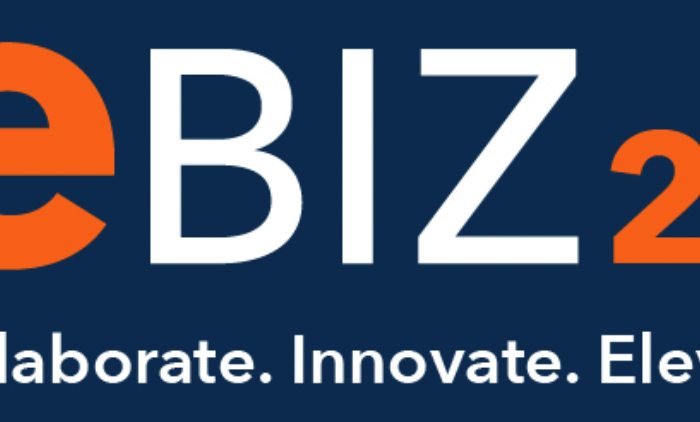Making AI Real Today
 AI has been all the rage since ChatGPT was unveiled. Not only is it the talk of every conversation relating to technology, price management, operational improvement, customer service, marketing and more, but it has also powered the construction market with the explosion of data centers, advanced chip manufacturing, and, of course, the stock market. And think of all the conferences that it has spawned … even in the distribution industries!
AI has been all the rage since ChatGPT was unveiled. Not only is it the talk of every conversation relating to technology, price management, operational improvement, customer service, marketing and more, but it has also powered the construction market with the explosion of data centers, advanced chip manufacturing, and, of course, the stock market. And think of all the conferences that it has spawned … even in the distribution industries!
But it’s impact to date is more aspirational rather than reality as companies try to figure out what to do and how to do it. Further, once they start, they are finding that they frequently have data governance / data quality issues. And, while ChatGPT, Microsoft CoPilot and the plethora of free and inexpensive programs makes it seem inexpensive and easy to implement, the more powerful applications require people, time, and yes, some money.
I’ve been asking electrical distributors and over 20 electrical manufacturers about their current initiatives relating to AI. A high percentage of are interested and “talking” about it. Some manufacturers have hired consultants. One, this week, told me they had just hired someone who will focus on AI and identify opportunities. Many see opportunities in the areas of pricing, operations, customer service / support, “feeding” or mining data more efficiently, a few see opportunities tied to inside sales and improving response time to quotations.
And I’ve seen some tools, and some designed for the industry, that use AI, but all are in their infancy, and NONE are inexpensive, or cost-effective, investments … more likely because we’re at the bleeding edge of the technology and ideation.
But recently I was talking with Mark McGready. Many know Mark. He has experience from Schneider Electric, had his own software company that helped manufacturers and distributors manage SPAs, POS, pricing and more. He’s also worked for SPARXiQ and supported NAED, IDEA and others on data analytics. He understands technology, distribution and the channel. We talked AI. Here’s his thoughts:
How to make Artificial Intelligence become Real Intelligence
On November 30th, 2022, ChatGPT launched and set the world on fire. Within 2 months it had a hundred million users, and every talking head was advising us on how it was going to change everything. 2023 was the year of AI. This was the first step to changing our very way of lives, the next evolutionary step, the end of something and the beginning of something else. Members of the speakers circuit had to scrap their stock speeches and figure out how they could fake their way through a 30-minute talk about the power of this new technology. Company spokesmen learned to say AI repeatedly in every stockholder call, otherwise the money men would punish them. It even created its own stock market rally, with Nvidia being the biggest benefactor. If only we’d all put our savings on that horse a year ago.
So apart from overinflated stock prices, what’s changed in the last year? Do things feel any different than they did before? Has business undergone a transformation?
It’s ok to say that the majority of the people talking about AI don’t really understand it. It’s a complex code discipline that’s understood by very few, and the pocket protectors behind it speak in their own world of programming and computer science. It’s ok to not know what all this means or how it works, and the wise course of action is to just watch the pioneers and learn from their successes and failures. Most of us can detect when there’s substance and when there’s smoke and much of the talk about AI essentially been just that – talk.
Artificial Intelligence as a concept originated in the 50’s, and the measure of success was losing a computer beating you at checkers. We got there a long time ago, the power in your smart phone is enough to beat grandmasters in pretty much every board game. However, the common application of AI is robots who can interact with us. We’ve got there too – Siri can tell us the weather and Alexia can tell us the latest sports scores.
However, we’re not yet at the point where C-3PO is ready to take over our companies or manage our retirement portfolios. A year after the launch of ChatGPT you’d be hard pressed to find a significant impact other than helping students cheat on their homework. Given the potential money to be made we have to consider the possibility that it’s all going the way of the Segway. Nvidia could see a stock price reduction soon. Having said that I remember a word of wisdom spoken to me by a VP of IT when I first started working out of college. “The internet is a fad” said this visionary, “it won’t amount to anything, and no companies need to have their own websites.”
It’s safe to say that new technology takes time to take hold, and the path is only obvious once we’ve already walked it. And so every business executive has a blank page on their desk with “AI Business Plan” written on the top and nothing but doodles below. It feels like technology we can’t miss out on, but it feels like there’s no easy way to figure out what to do.
I think it’s best to break away from the term Artificial Intelligence. The average person has far higher intelligence than what the most powerful solutions can offer. We can create an artificial intelligence that can outsmart a real intelligence in tiny tasks like playing chess or adding numbers, but humanity is just too chaotic to program. It takes us 18 years before we’re ready to interact with the adult world (for some it takes a lifetime) and learning is a complicated thing. The human brain still remains unbeaten. Proper artificial human-like intelligence is still the stuff of science fiction.
That doesn’t mean we give up on the concept. I think it better to rebrand AI into two new, more relatable, terms: Automated Interactions and Analytics Integration, and both of these ideas are absolutely essential tools. If you think about AI in those terms, seeing the impact and understanding your strategy gets a whole lot easier.
Automated Interactions is what we have with Siri and Alexia. It’s our emails about order tracking, every customer service helpline that makes us press buttons, every time we opt for self-checkout. We take the people out of a standard customer service interaction so we can scale faster, be more accurate and respond quick to their needs. It’s been a godsend for efficiency, standardization, and business improvement. And it’s something that should be a cornerstone for every business. Our nature might prefer to interact with a person, we’re taught that every conversation with a customer is an opportunity to sell, but really much of the substance of logistics and doing business should be automatic. “Where’s my stuff, what’s the price, does this thing meet my needs, do you sell these, can I buy these” – we live in a world where time is more precious with new generations used to getting answers on their phone or computer. We’ve got to embrace how the world wants us to be. Amazon didn’t get where it is because it sold different goods, it just sold them in a different way – if Amazon had been a 1-800 number service or a brick and mortar store it would have quickly disappeared. Rather it became a company that delivers products to my doorstep every single day. Amazon essentially automated the retail experience, and we’d all had enough bad retail experiences to transform Jeff Bezos into a Bond villain.
Anytime speakers talk about Blockbuster and Netflix, or Kodak and digital cameras, they’re saying the same thing. Simplification, automation, and self-service are the tides of business.
Companies would be well advised to look at all their interactions, inside and out, and find ways to automate as many as they can. This is the digitization journey; this is the structure of the company of the future. Save the human interaction to the activities that deserve a higher investment or our resources. Every company can run a quick study on all the ways their customers interact with them, scale them in order of frequency and importance, and work immediately on seeing what can be automated in the most convenient way possible.
Analytics Integration is one where we’re all still struggling. It’s just not in our nature to trust the numbers, and it requires the biggest cultural change. Automated Interactions is demanded by customers, but few sales people demand more spreadsheets. And yet, as sales forces get younger and move onto the next generation, information-on-demand and learning just-in-time is the new norm. You can’t hire a sales person and give them 3 years to learn the product and market before you start getting a return on investment. By the time those three years are over they’ll be working somewhere else – workers have mobility now and the more skills you teach people the more mobile they become.
Instead, we need to consider tools that teach our workers how to become smart about a customer in nearly an instant. Luckily, we’ve been trained to do this already for the last couple of decades, only we call it fantasy football. Moneyball isn’t just about helping the Cubs win another world series, it’s how we treat the world. Just-in-time information is how we go about our days.
Our lives are too big and complicated to know everything now. Once vacations used to be a car ride away to the same few places, now they’re a flight anywhere on the planet. Restaurants used to be just the couple of spots we always went to, now we each have 200 restaurants who’ll deliver hot food to our doorstep in 30 minutes. Back in the day we all watched the same tv shows and talked about them the next day. Now we have 40 streaming providers and what feels like a thousand new tv options every week. In short, we have so much choice that we rely on just in time learning to navigate our options.
Just in time is not just 5-star reviews and Amazon comments, it’s using data to learn about our options to understand what’s available to make a better choice. It’s essentially analytics insights. And yet when we look at our own business intelligence systems our employees use to manage their roles – either front end with customer engagement or behind the scenes with operational processes, do they just reporting, or do they have analytics giving them insights on what to do next?
A common example would be customer reporting. We can run a report that tells us what a customer has bought from us in the last of years, but do we know what they could have bought, what their overall spend might be, what their focus is, what target product lines they might consume, how their segment is expected to change and grow? Some of that we might have in bits and pieces, but is it easy to paint a picture? Put it another way – is it easier to figure out what the best flat screen TV to buy under $500 is, or is it easier to know what to say on our next call with one of our largest customers? Or are we looking internally at our operations, how we handle suppliers and how profitable and efficient our processes are? Can we easily list the ten goals we should set for the year that would make the largest measurable difference to our year end results?
This all might sound like science fiction, but in truth we can create this world of analytics that becomes integrated with our workforce. This is also the next step of digitization, and while it’s a little bit murkier than Automatic Interactions, the path is still there.
So, as you enter 2024, fresh off the high of AI being the new ‘next best thing’ and you’re wondering what does this actually look like, I’d suggest these are the areas to invest in and focus on. And even though you’ve never needed them before, ideas first sound silly, then dangerous, then obvious and universal. If we’re all selling the same products at the same prices to the same customers with the same sales people and the same operational support, it’s the little things that will make the difference. AI is likely to become the biggest little thing for the next generation.
Mark McGready has been working on industry data analytics for over two decades and has long believed that machines have a lot of truths they can uncover in our business. He currently works for SparxIQ and consults with NAED and IDEA on their data analytics services. Previously Mark worked for a large manufacturer managing their rebates and SPAs and founded a data analytics and SPA management technology firm. Mark will be at the NAED National if you want to connect with him.
Your thoughts? If you’d like to discuss analytics, data, or AI ideation, give me a call. (and yes, I’ve seen some tools being used / demo’d in the electrical industry.)























